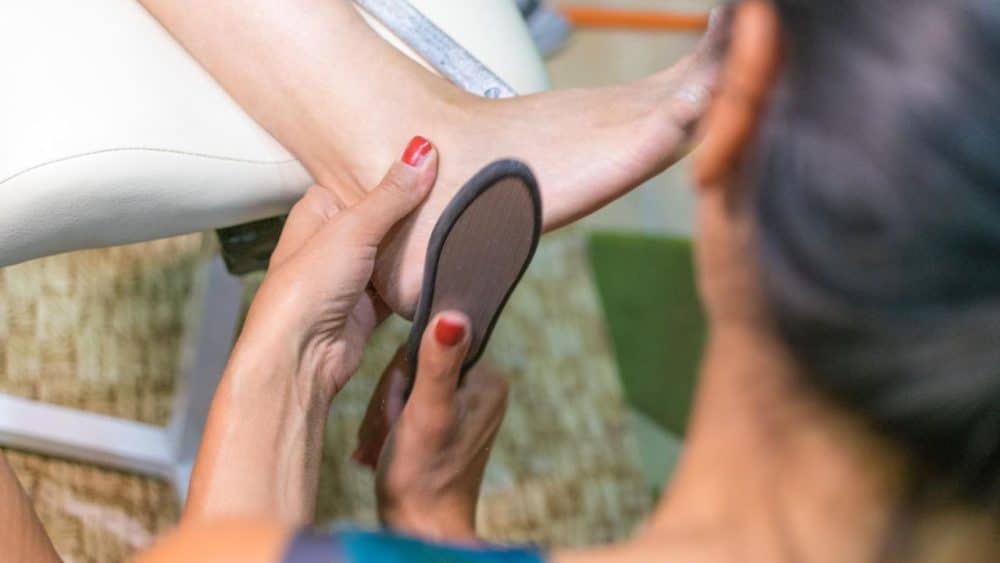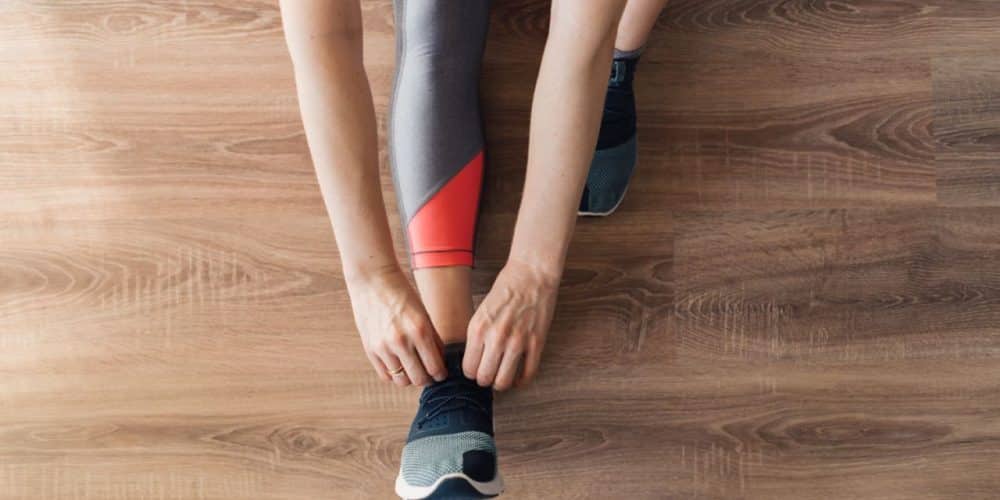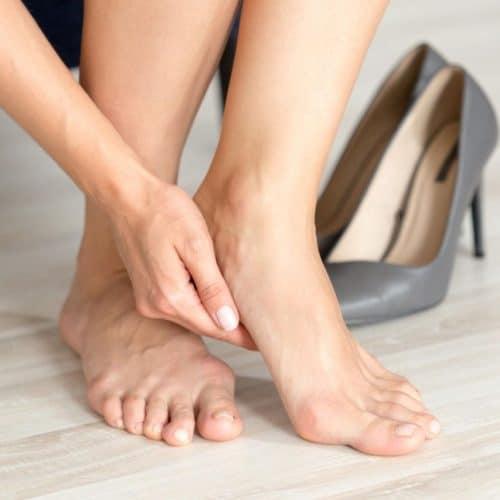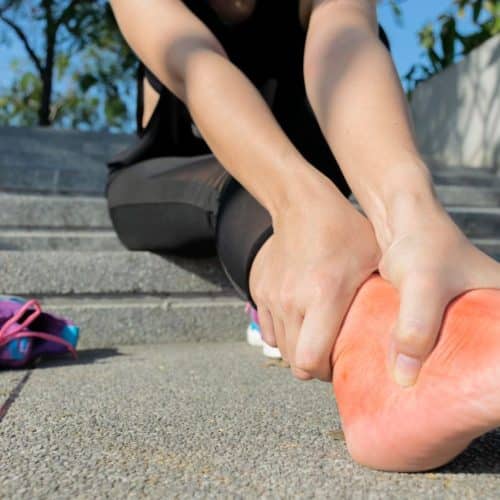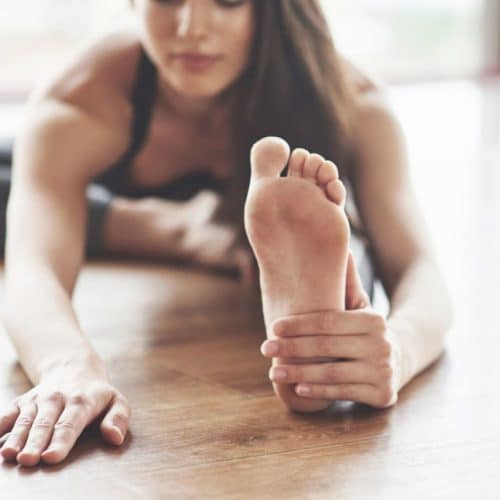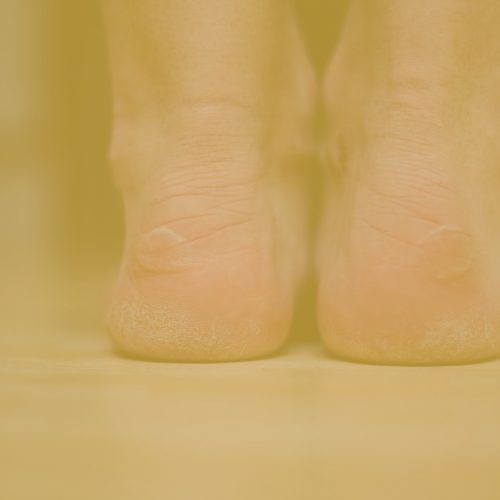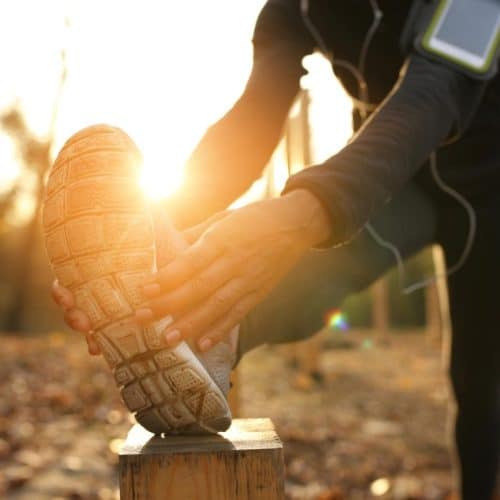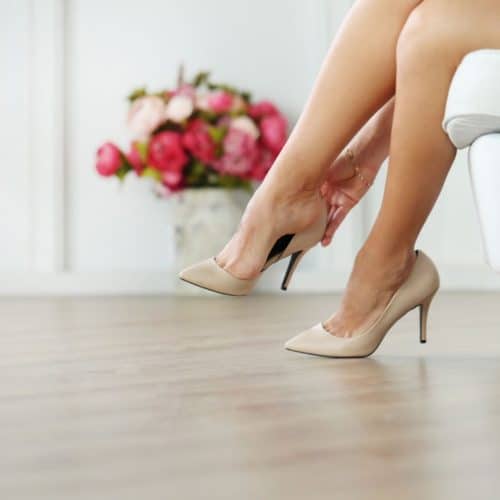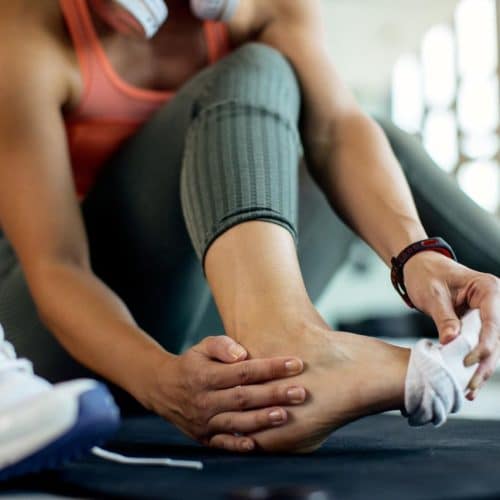Are you tired of foot pain slowing you down? Curious about how foot orthotics can make a difference? In this article, we’ll uncover the easy facts about foot orthotics and how they can relieve and support various foot conditions. Whether you’re an athlete seeking enhanced performance or everyday comfort, understanding the benefits of foot orthotics can lead to a more comfortable and active lifestyle.
What Are Foot Orthotics?
Foot orthotics, commonly called orthotic insoles or inserts, are specialised devices designed to provide support, correct foot alignment, and alleviate pain or discomfort associated with various foot conditions. These devices play a crucial role in enhancing foot health and improving the overall quality of life, especially for individuals who experience discomfort while walking, standing, or engaging in physical activities.
Foot orthotics are available in custom and prefabricated forms, offering tailored solutions for many foot-related issues. These issues can stem from improper foot alignment, excessive pressure on certain areas, or existing medical conditions affecting foot function.
The primary goal of foot orthotics is to promote optimal foot mechanics by adjusting the positioning and alignment of the feet. This, in turn, can lead to improved biomechanics throughout the lower body, as proper foot alignment has a cascading effect on the knees, hips, and even the lower back.
By providing the necessary support and correcting irregularities in foot structure, orthotics contribute to enhanced stability, reduced strain on muscles and joints, and reduced pain and discomfort.
Foot orthotics are not limited to addressing existing foot problems; they can also serve as preventive measures to avoid potential issues. Athletes, individuals with specific medical conditions, and even those who spend prolonged periods on their feet can benefit from using orthotics to minimise the risk of injury and discomfort.
Whether someone is dealing with conditions like plantar fasciitis, flat feet, bunions, or general foot fatigue, foot orthotics offer a versatile and effective solution. These devices can make a significant difference in daily life by allowing individuals to move more comfortably and confidently, ultimately improving their overall well-being.
Foot orthotics are not just cushioned inserts but specialised tools designed to optimise foot function, alleviate pain, and contribute to a healthier and more active lifestyle. Whether custom-made to suit individual needs or selected from a range of available options, foot orthotics are a valuable asset for anyone seeking to enhance their foot health and overall quality of life.
Types of Foot Orthotics
Foot orthotics come in various types, each designed to address specific foot conditions and individual needs. These specialised inserts support correct foot alignment and enhance comfort. Let’s explore the different types of foot orthotics and how they can benefit individuals with various foot-related issues.
1. Rigid Orthotics
Rigid orthotics, often crafted from materials like plastic or carbon fibre, are meticulously designed to control excessive motion within the foot. These orthotics are particularly useful for individuals who require significant stability and support. They limit unwanted movement and guide the foot into a more biomechanically optimal position.
Rigid orthotics are commonly prescribed to address overpronation or supination, leading to knee, hip, and lower back discomfort. These orthotics effectively redistribute pressure, reduce strain on muscles and ligaments, and contribute to more balanced foot mechanics.
2. Soft Orthotics
Soft orthotics are characterised by cushioning properties, making them an excellent choice for individuals seeking shock absorption and extra comfort. Constructed from cushioning materials like foam or gel, soft orthotics provide gentle padding that helps alleviate pressure on sensitive foot areas.
They are particularly beneficial for those with arthritis, diabetic foot ulcers, or foot deformities. Soft orthotics work by cushioning and reducing each step’s impact, allowing individuals to move more comfortably while minimising the risk of friction-related injuries.
3. Semi-Rigid Orthotics
Semi-rigid orthotics strike a balance between support and cushioning. These versatile inserts offer stability while allowing a certain degree of natural foot movement. They are often recommended for athletes and active individuals who require support and flexibility.
Semi-rigid orthotics are especially useful for those with flat feet, as they provide the necessary arch support while accommodating moderate movement. These orthotics enhance comfort and performance during various physical activities by promoting proper foot alignment and reducing joint strain.
Common Foot Conditions Addressed by Orthotics
Foot orthotics are versatile devices that offer targeted solutions for various common foot conditions. These specialised inserts can relieve, improve foot function, and enhance overall comfort for individuals with different issues. Let’s delve into some of the most prevalent foot conditions that can be effectively addressed with the use of orthotics:
1. Plantar Fasciitis
Plantar fasciitis is characterised by inflammation of the plantar fascia, a band of tissue that runs along the bottom of the foot. It often causes intense heel pain, especially during the first steps taken in the morning. Orthotics can play a significant role in alleviating plantar fasciitis by providing crucial arch support. By supporting the arch and distributing weight more evenly, orthotics help reduce tension on the plantar fascia, thus minimising pain and discomfort.
2. Flat Feet
Flat feet, also known as fallen arches, occur when the arches of the feet do not have the typical curve. This condition can lead to overpronation, where the feet roll inward excessively during walking or running. Orthotics for flat feet are designed to provide the missing arch support, promoting proper foot alignment and distributing weight more evenly. By offering the necessary support, these orthotics help reduce strain on the feet, ankles, knees, and lower back.
3. Bunions
Bunions are bony bumps that develop at the base of the big toe joint. They can be painful and often lead to discomfort while wearing shoes or walking. Orthotics designed for bunions typically feature a wider toe box that reduces pressure on the affected area. Providing ample room for the toes and minimising friction, these orthotics offer relief and allow individuals to go about their daily activities with reduced discomfort.
4. Metatarsalgia
Metatarsalgia is a condition characterised by pain and inflammation in the ball of the foot, usually under the heads of the metatarsal bones. This pain can be exacerbated by running, jumping, or prolonged standing. Orthotics designed to address metatarsalgia often include cushioning materials under the metatarsal heads, absorbing shock and reducing pressure. These orthotics help alleviate pain and discomfort, allowing individuals to engage in physical activities without hindrance.
5. Heel Spurs
Heel spurs are bony growths that develop on the underside of the heel bone. They can cause pain and discomfort, especially with each step taken. Orthotics can relieve heel spurs by offering cushioning and support to the heel area. These orthotics absorb shock and reduce pressure on the affected area, helping to mitigate pain and allowing individuals to move more comfortably.
By targeting these common foot conditions, orthotics offer tailored solutions beyond simple cushioning. They address the underlying biomechanical issues contributing to discomfort, allowing individuals to experience improved foot function, reduced pain, and enhanced quality of life.
Consulting a podiatrist to determine the most appropriate type of orthotic for specific conditions is essential for achieving optimal results.
Benefits of Using Foot Orthotics
Foot orthotics offer a range of benefits that extend beyond providing comfort. These specialised inserts are crucial in enhancing foot health and overall well-being. Here are some of the key advantages of using foot orthotics:
- Pain Relief: Orthotics are designed to alleviate pain and discomfort associated with various foot conditions, such as plantar fasciitis, flat feet, and bunions.
- Improved Mobility: Properly aligned feet contribute to better overall mobility, allowing individuals to walk, run, and engage in activities with reduced discomfort.
- Injury Prevention: By correcting foot alignment and providing support, orthotics can help reduce the risk of injuries to muscles, ligaments, and joints in the lower body.
- Enhanced Sports Performance: Athletes can benefit from the added stability and support that orthotics provide, leading to improved performance and reduced fatigue.
- Reduced Strain: Orthotics help distribute pressure and weight more evenly across the feet, reducing strain on specific areas and minimising the risk of overuse injuries.
- Customised Support: Custom-made orthotics are tailored to an individual’s unique foot structure, ensuring personal support and comfort.
- Improved Biomechanics: Orthotics help correct irregular foot mechanics, which can positively affect the alignment of the knees, hips, and lower back.
- Enhanced Comfort: Orthotics offer cushioning and shock absorption, making everyday activities more comfortable, especially for those with foot conditions or sensitivities.
- Posture Correction: Proper foot alignment facilitated by orthotics can improve posture, reducing the strain on the spine and promoting better overall body alignment.
- Minimised Fatigue: By reducing the strain on muscles and joints, orthotics can help prevent fatigue, allowing individuals to stay active longer.
Incorporating foot orthotics into daily routines can significantly improve foot health, comfort, and overall quality of life. Whether for managing chronic foot conditions or optimising performance, the benefits of using foot orthotics are numerous and extend to various aspects of physical well-being.
Getting Fitted for Custom Orthotics
Custom orthotics provide a personalised solution for specific foot conditions and biomechanical issues. Unlike over-the-counter inserts, which offer a one-size-fits-all approach, custom orthotics are individually crafted to meet the unique needs of each individual’s feet. The process of getting fitted for custom orthotics involves several steps to ensure optimal comfort and effectiveness:
- Initial Assessment: The journey begins with an initial assessment by a podiatrist or healthcare practitioner. During this consultation, the professional will thoroughly examine your feet, including analysing your foot structure, gait (walking pattern), and any existing foot-related issues.
- Gait Analysis: Gait analysis involves observing your walking or running pattern. This helps identify any irregularities or imbalances contributing to discomfort or pain. A treadmill or pressure-sensitive mat may assess how your feet interact with the ground during movement.
- Foot Impressions: To create custom orthotics that perfectly match your foot contours, impressions of your feet are taken. Traditionally, plaster moulds were used, but modern technology has introduced methods like digital scanning. These impressions serve as the basis for designing orthotics that provide the necessary support and correction.
- Biomechanical Assessment: The podiatrist will consider factors beyond foot structure, such as the alignment of your knees, hips, and spine. This holistic approach ensures that the custom orthotics address issues throughout the lower body.
- Orthotic Design: A customised design for your orthotics is created using the collected data. The design considers your foot type, gait analysis, and specific foot conditions. The goal is to design orthotics that promote proper foot alignment and alleviate discomfort.
- Fabrication: Once the design is finalised, the actual orthotics are fabricated. They are carefully crafted to match the specifications of your feet, ensuring a snug fit within your footwear.
- Fitting and Adjustment: After the orthotics are ready, you’ll return for a fitting session. During this appointment, the podiatrist will assess how the orthotics fit within your shoes and make any necessary adjustments to ensure maximum comfort and effectiveness.
- Education and Guidance: As you start using your custom orthotics, the podiatrist will guide how to insert them into your footwear properly. They will also advise on gradually increasing wear time to allow your feet to adjust to the new support.
- Follow-Up Appointments: Regular follow-up appointments may be scheduled to assess your progress and make any further adjustments if needed. This ensures that the orthotics continue to provide optimal support and address your evolving foot health needs.
Custom orthotics offer a tailored approach to foot health, addressing individual concerns and providing personalised support. While getting fitted for custom orthotics requires more time and investment than over-the-counter options, the benefits of improved comfort, reduced pain, and enhanced foot mechanics are well worth the effort.
Working closely with a healthcare practitioner throughout this process ensures that the custom orthotics effectively contribute to your overall well-being.
Caring for Your Foot Orthotics
It is crucial to properly maintain and care for your foot orthotics if you want them to last as long as intended and continue to be effective. Maintaining the inserts on a regular basis will increase their lifespan and guarantee that they continue to offer the necessary support and comfort to the user. Here are some helpful pointers to keep in mind when it comes to taking care of your foot orthotics:
1. Cleaning and Hygiene
- Regular Cleaning: Clean your orthotics regularly to prevent dirt, sweat, and bacteria buildup. Use a damp cloth or sponge to wipe them down after each use.
- Avoid Submerging: While some orthotics are water-resistant, it’s best to avoid fully submerging them in water. Instead, wipe them with a damp cloth or use a mild soap solution for thorough cleaning.
- Drying: You should wait until your orthotics have been exposed to the air for an adequate amount of time before placing them back into your shoes. It is in your best interest to keep them out of the direct sunshine and away from any other sources of heat because doing so may lead them to grow deformed.
2. Footwear Compatibility
- Choose Appropriate Footwear: Select shoes with ample space to accommodate your orthotics. Shoes with removable insoles are ideal, providing room for the orthotic inserts without compromising fit.
- Proper Fit: Ensure that your shoes are the correct size and fit well. Ill-fitting shoes can affect the alignment and effectiveness of your orthotics.
3. Handling and Storage
- Insertion and Removal: When inserting or removing your orthotics, do so gently to avoid bending or damaging them. Follow the guidelines provided by your podiatrist to ensure proper placement.
- Storage: Store your orthotics in a cool, dry place when not in use. If they come with a storage case, use it to protect them from dust and debris.
4. Inspection and Replacement
- Regular Inspection: Regularly examine your orthotics for signs of wear, cracks, or damage. If you notice any issues, consult your podiatrist on whether replacement is necessary.
- Replacement Timeline: While the lifespan of orthotics varies, a general guideline is to replace them every 1 to 5 years, depending on usage and materials.
5. Avoid Extreme Conditions
- Temperature Extremes: It is best to keep your orthotics away from extreme temperatures, whether they be hot or cold because this can cause them to lose their shape and become less effective.
- Chemical Exposure: Keep your orthotics away from solvents, chemicals, and harsh cleaning agents, as these can degrade the materials.
By following these care guidelines, you can ensure that your foot orthotics remain effective and comfortable for an extended period. Regular maintenance not only prolongs the life of your inserts but also maximises their benefits in support, comfort, and overall foot health.
If you have any concerns about the care of your orthotics, don’t hesitate to consult your podiatrist for personalised guidance and recommendations.
Maintaining Good Foot Health
Taking care of your feet goes beyond using orthotics; it involves adopting a holistic approach to ensure their well-being. Here are some practical tips and habits to help you maintain optimal foot health:
- Proper Foot Hygiene: Clean your feet by washing them daily with mild soap and warm water. Dry them thoroughly, especially between the toes, to prevent fungal infections.
- Moisturise: Regularly apply moisturiser to prevent dry and cracked skin. Avoid applying lotion between the toes, as this area needs to remain dry.
- Trim Toenails: Trim your toenails straight across to prevent ingrown toenails. Don’t cut them too short or round the corners, as this can lead to painful ingrown nails.
- Wear Proper Footwear: Choose footwear that provides adequate support, cushioning, and proper fit. Avoid shoes that are too tight or too loose, as they can cause discomfort and foot issues.
- Rotate Shoes: Give your feet a break by rotating your footwear. This helps prevent excessive wear on a single pair of shoes and reduces the risk of developing pressure points.
- Foot Exercises: Perform simple foot exercises to improve strength and flexibility. Toe curls, arch lifts, and ankle rotations can help maintain healthy foot muscles.
- Stretching: Regularly stretch your calf muscles, Achilles tendons, and plantar fascia to prevent tightness and maintain flexibility.
- Avoid High Heels: Limit high heels, as they can alter foot mechanics and lead to discomfort, bunions, and other issues.
- Maintain a Healthy Weight: Excess weight puts additional stress on your feet. Maintaining a healthy weight helps reduce the strain on your feet and lower limbs.
- Stay Hydrated: Proper hydration contributes to healthy skin and overall foot health. Drink enough water throughout the day to maintain hydration.
- Regular Check-ups: Regularly visit a podiatrist or foot specialist, especially if you have existing foot conditions or concerns. Regular check-ups help catch potential issues early.
- Proper Warm-up: Before engaging in physical activities, warm up your feet with gentle stretches and movements to prevent strain and injuries.
- Elevate Feet: If your feet feel tired or swollen, elevate them to encourage proper circulation and reduce swelling.
- Listen to Your Body: Pay attention to any discomfort, pain, or changes in your feet. Addressing issues promptly can prevent them from worsening.
By incorporating these practices into your daily routine, you can maintain healthy feet that support your overall well-being. Remember that foot health is an ongoing journey; small, consistent efforts can go a long way in preventing discomfort and promoting optimal foot function.
Conclusion
In conclusion, the world of foot orthotics offers benefits worth exploring for Australians seeking enhanced comfort and improved overall well-being. These orthotic devices provide a simple yet effective solution to various foot-related concerns, from alleviating pain to correcting imbalances.
If you’re ready to step towards better foot health, consider the following question: “Have you ever experienced the remarkable difference that foot orthotics can make in your daily life?” Imagine walking with renewed comfort, experiencing reduced fatigue, and bidding farewell to those persistent foot aches. The journey to healthier, happier feet starts with a single step – the step towards embracing foot orthotics.
As you delve deeper into the possibilities, remember that finding the right orthotic solution tailored to your unique needs is essential. Whether you’re an athlete striving for peak performance or someone seeking relief from the strains of everyday life, foot orthotics could be the answer you’ve been searching for.
So, why wait? Start your journey towards discovering the easy facts about foot orthotics today. Experience the joy of walking pain-free, the satisfaction of improved posture, and the overall boost in your quality of life. Your feet deserve the best care, and foot orthotics offer an avenue to achieve that effortlessly.
Are you ready to step into a world of comfort and vitality? Your feet are waiting to thank you!
Content Summary
- Whether you’re an athlete seeking enhanced performance or everyday comfort, understanding the benefits of foot orthotics can lead to a more comfortable and active lifestyle.
- Foot orthotics are custom-designed inserts that can address issues like flat feet, plantar fasciitis, and improper alignment.
- Discover the path to better foot health and improved mobility in the upcoming sections.
- Foot orthotics, commonly called orthotic insoles or inserts, are specialised devices designed to provide support, correct foot alignment, and alleviate pain or discomfort associated with various foot conditions.
- These devices play a crucial role in enhancing foot health and improving the overall quality of life, especially for individuals who experience discomfort while walking, standing, or engaging in physical activities.
- Foot orthotics are available in custom and prefabricated forms, offering tailored solutions for many foot-related issues.
- Whether someone is dealing with conditions like plantar fasciitis, flat feet, bunions, or general foot fatigue, foot orthotics offer a versatile and effective solution.
- These devices can make a significant difference in daily life by allowing individuals to move more comfortably and confidently, ultimately improving their overall well-being.
- Foot orthotics are not just cushioned inserts but specialised tools designed to optimise foot function, alleviate pain, and contribute to a healthier and more active lifestyle.
- Whether custom-made to suit individual needs or selected from a range of available options, foot orthotics are a valuable asset for anyone seeking to enhance their foot health and overall quality of life.
- Foot orthotics come in various types, each designed to address specific foot conditions and individual needs.
- Foot orthotics are versatile devices that offer targeted solutions for various common foot conditions.
- These specialised inserts can relieve, improve foot function, and enhance overall comfort for individuals with different issues.
- Orthotics can play a significant role in alleviating plantar fasciitis by providing crucial arch support.
- Orthotics for flat feet are designed to provide the missing arch support, promoting proper foot alignment and distributing weight more evenly.
- Orthotics can relieve heel spurs by offering cushioning and support to the heel area.
- Foot orthotics offer a range of benefits that extend beyond providing comfort.
- Orthotics are designed to alleviate pain and discomfort associated with various foot conditions, such as plantar fasciitis, flat feet, and bunions.
- Incorporating foot orthotics into daily routines can significantly improve foot health, comfort, and overall quality of life.
- Custom orthotics provide a personalised solution for specific foot conditions and biomechanical issues.
- The journey begins with an initial assessment by a podiatrist or healthcare practitioner.
- To create custom orthotics that perfectly match your foot contours, impressions of your feet are taken.
- A customised design for your orthotics is created using the collected data.
- The design considers your foot type, gait analysis, and specific foot conditions.
- As you start using your custom orthotics, the podiatrist will guide how to properly insert them into your footwear.
- Working closely with a podiatrist throughout this process ensures that the custom orthotics effectively contribute to your overall well-being.
- It is crucial to properly maintain and care for your foot orthotics if you want them to last as long as intended and continue to be effective.
- If you have any concerns about the care of your orthotics, don’t hesitate to consult your podiatrist for personalised guidance and recommendations.
- Taking care of your feet goes beyond using orthotics; it involves adopting a holistic approach to ensure their well-being.
- Clean your feet by washing them daily with mild soap and warm water.
- Perform simple foot exercises to improve strength and flexibility.
- Toe curls, arch lifts, and ankle rotations can help maintain healthy foot muscles.
- Excess weight puts additional stress on your feet.
- Maintaining a healthy weight helps reduce the strain on your feet and lower limbs.
- Proper hydration contributes to healthy skin and overall foot health.
- Regularly visit a podiatrist or foot specialist, especially if you have existing foot conditions or concerns.
- Pay attention to any discomfort, pain, or changes in your feet.
- By incorporating these practices into your daily routine, you can maintain healthy feet that support your overall well-being.
- Remember that foot health is an ongoing journey; small, consistent efforts can go a long way in preventing discomfort and promoting optimal foot function.
- In conclusion, the world of foot orthotics offers benefits worth exploring for Australians seeking enhanced comfort and improved overall well-being.
- These orthotic devices provide a simple yet effective solution to various foot-related concerns, from alleviating pain to correcting imbalances.
- The journey to healthier, happier feet starts with a single step – the step towards embracing foot orthotics.
- As you delve deeper into the possibilities, remember that finding the right orthotic solution tailored to your unique needs is essential.
- Start your journey towards discovering the easy facts about foot orthotics today.
- Experience the joy of walking pain-free, the satisfaction of improved posture, and the overall boost in your quality of life.
- Your feet deserve the best care, and foot orthotics offer an avenue to achieve that effortlessly.
FAQs About Foot Orthotics
1. What Are Foot Orthotics Used For?
Foot orthotics correct foot alignment, provide support, and alleviate pain or discomfort caused by various foot conditions.
2. Can I Wear Orthotics in Any Type of Shoe?
Orthotics can be worn in many shoes, but choosing shoes with enough space to accommodate the inserts is important.
3. Are Orthotics Only for Older Individuals?
No, orthotics can benefit people of all ages, from children to seniors, especially if they experience foot pain or have specific foot conditions.
4. How Long Do Foot Orthotics Typically Last?
The lifespan of orthotics varies depending on usage, materials, and care. On average, they can last from 1 to 5 years.
5. Can I Transition to Orthotics Gradually?
Yes, it’s recommended to gradually increase the time you wear orthotics to allow your feet to adjust to the new support.


